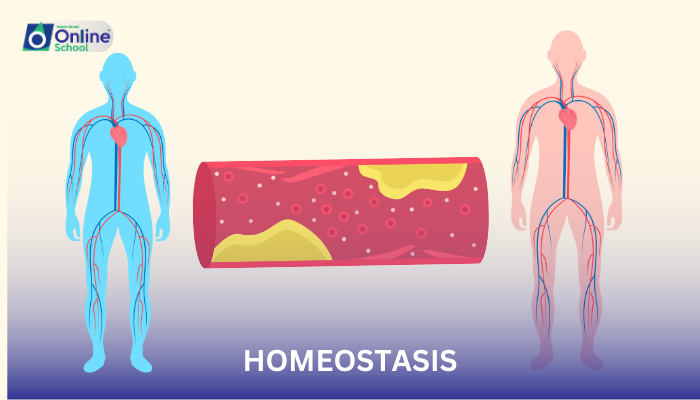
Learning Outcomes
i. Define homeostasis and its significance in biological systems.
ii. Comprehend the mechanisms by which homeostasis maintains stability within organisms.
iii. Recognize the potential consequences when homeostatic balance is disrupted.
i. Definition of Homeostasis:
Homeostasis refers to the self-regulating processes that organisms use to maintain stable internal conditions despite changes in external environments. It is crucial for the survival of cells and therefore the organism as a whole.
Dynamic Equilibrium: Homeostasis is not a static state but rather a dynamic process of adjustments and balance.
Feedback Systems: The body uses feedback mechanisms, both negative and positive, to regulate physiological functions and maintain homeostatic balance.
ii. Critical Role of Homeostasis
Homeostasis allows an organism to function effectively and efficiently:
Optimal Conditions for Enzyme Activity: Enzymes, which catalyze all metabolic reactions, require specific conditions to function optimally. Homeostasis ensures that these conditions are maintained.
Stable Body Temperature: In humans, a stable body temperature is essential for the proper functioning of the body.
Balanced pH Levels: Homeostasis regulates the pH levels in the blood and other bodily fluids to prevent acidosis or alkalosis.
iii. Mechanisms of Homeostasis
Thermoregulation: The body can regulate temperature through sweating, shivering, and altering blood flow to the skin.
Blood Glucose Levels: The pancreas regulates blood sugar by releasing insulin or glucagon as needed.
Fluid Balance: The kidneys maintain fluid balance through the excretion or retention of water and electrolytes.
iv. Consequences of Homeostasis Disruption
When homeostatic processes fail or are overwhelmed, it can lead to illness or disease:
Hyperthermia/Hypothermia: If the body cannot regulate temperature, it can lead to heatstroke or hypothermia.
Diabetes: Disruption in blood glucose homeostasis can result in diabetes.
Hypertension: Imbalance in blood pressure regulation can cause hypertension, affecting various organs and systems.
In conclusion, homeostasis is a fundamental concept in physiology, representing the myriad ways in which biological systems maintain conditions necessary for life. Disruptions in homeostasis can lead to serious health issues, highlighting the importance of these processes in sustaining life. Understanding homeostasis provides a foundation for studying how organisms interact with their environments and respond to changes, both internally and externally.